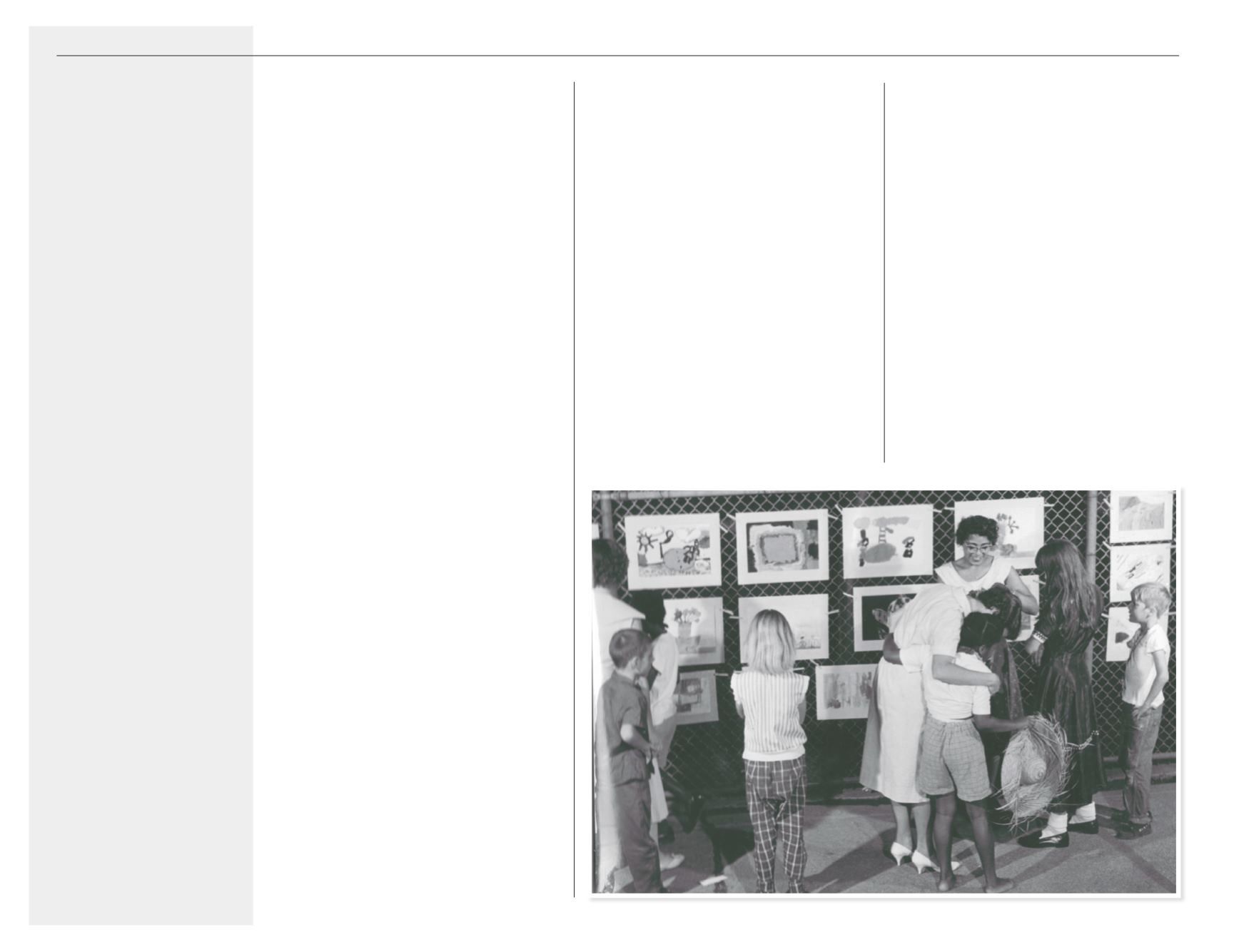

A
dvancing
T
he
K
ingdom
: K
ingdom
H
ouse
Ethel Koeppe. They and their children
had previously been at the Caroline
Mission in St. Louis, where they lived
as settlement workers and Ralph was
Program Director.
15
Koeppe assumed
his duties the first of September and
was introduced later that month at the
meeting of the Women’s Board as the
new Executive Director.
Recalling back on his memories
of coming to Kingdom House in
1955, Koeppe said, “Two tasks were
immediately apparent: (1) To strengthen
the activities program and the material
relief services; (2) To develop ways and
means for a new or improved physical
plant.”
16
To accomplish these goals,
his first major efforts concentrated on
developing a highly qualified group of
professionally trained social workers
that replaced what had largely been a
volunteer effort. This staff concentrated
on reinforcing neighborhood groups,
which improved the relationship of the
agency with the community and aided in
building local leadership.
Reiterating the opportunities
presented in the neighborhood, Koeppe
exhorted the November Women’s
Board, “...by nature our work is made
up of strong contrasts. There are lovely
new homes in the Darst housing project
contrasting with some of the miserable
homes where the people are now living.
More work is being done – more left
undone. More things are being received,
many more asked for. We are helping to
equalize things ‘In His name for their
sakes[’].”
17
The Darst, Webbe and Clinton-
Peabody Projects were three of several
in the Kingdom House neighborhood,
including the nationally decried Pruitt-
Igoe apartments. Pruitt-Igoe consisted
of 2,762 apartments in thirty-three
eleven story apartment buildings. “...
no other public housing project in the
country approaches it [Pruitt-Igoe] in
terms of vacancies, tenant concerns and
anxieties, or physical deterioration...
[in] one 57-acre tract all of the problems
and difficulties that arise from race
and poverty and all of the impotence,
indifference and hostility with which
our society has so far dealt with [these
issues]....”
18
Planned in the early 1950s the
Pruitt-Igoe Housing projects were first
occupied in 1954. The original plan was
to create two segregated projects, Pruitt
for African Americans, and Igoe, across
the street for whites. This plan was ruled
unconstitutional, however, and after a
short period of integration the project
became all-African American. Federally
funded research conducted in the early
1960s to examine the failures of public
housing found “by 1959 the project had
become a community of scandal both
because of certain unattractive design
features (for example, the elevators
stop only on the fourth, seventh and
tenth floors), the wide publicity given
to assorted crimes in the project (rape,
64
A
P
hoto
:
A:
Art exhibit on the fence
R
alph
K
oeppe
brought
from
C
aroline
M
ission
a
strong
commitment
towards
social
justice
and
ameliorating
the
conditions of
inner
city
poverty
.















